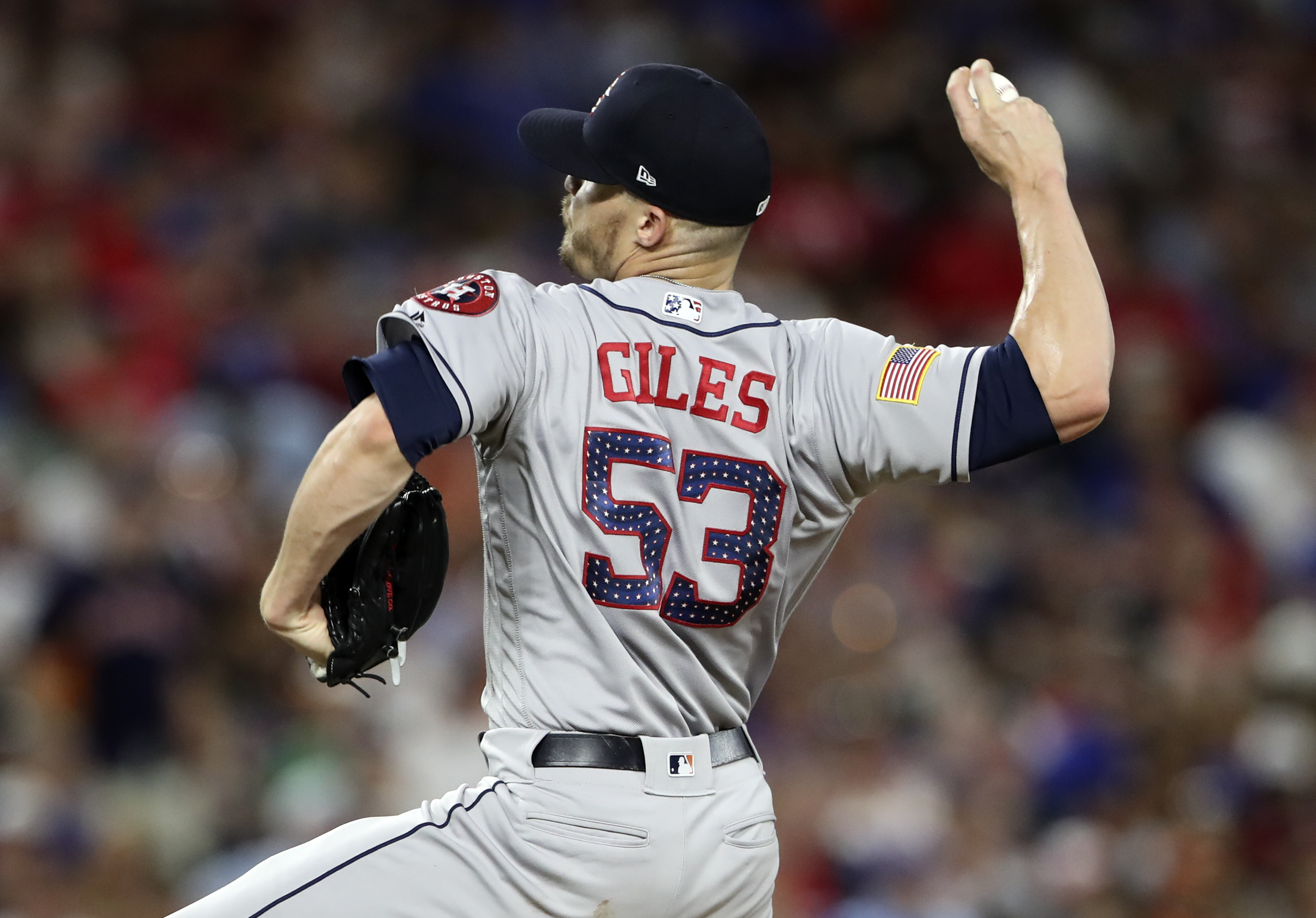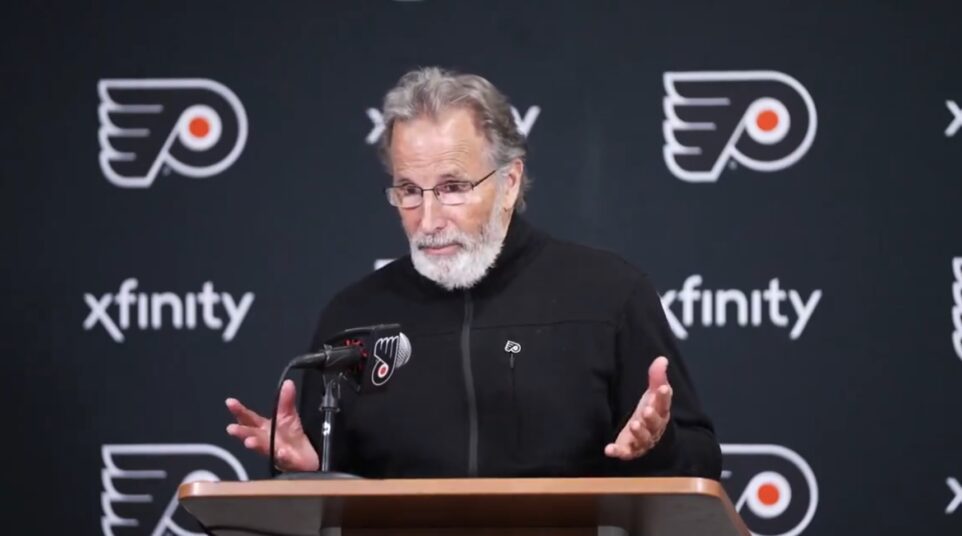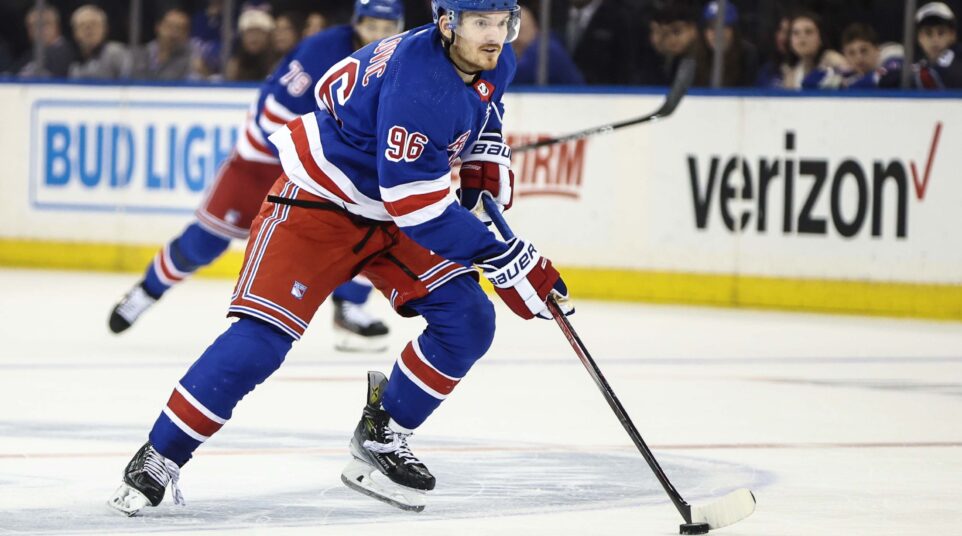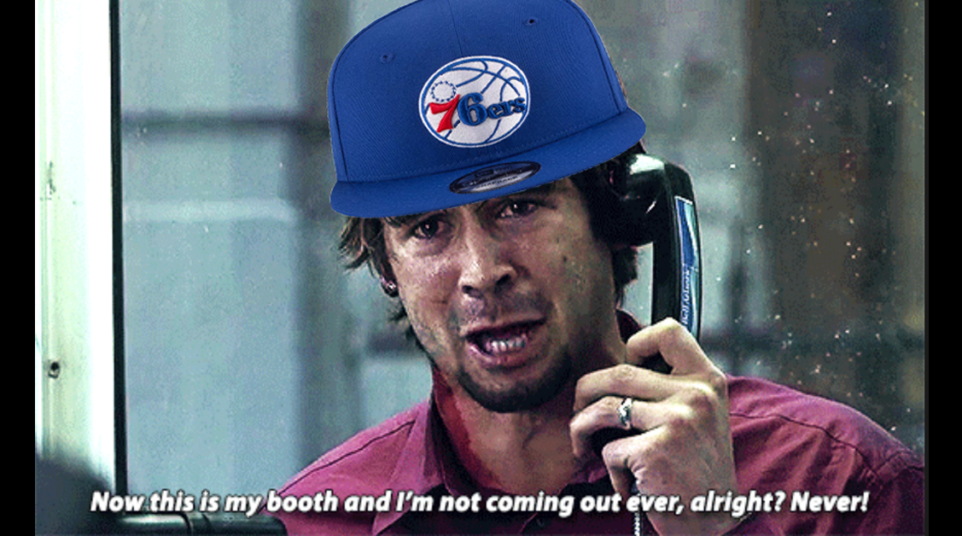
What Can We Learn From The Ken Giles Trade?
Last week, as Vince Velasquez took the mound for the Phillies in their series finale against the Mets, Ken Giles was packing his bags for Fresno. Giles, the erstwhile Phillies closer who was shipped to Houston prior to the 2016 season for a package of pitchers that included Velasquez, had been demoted to the minor leagues by the Astros organization.
Astros brass had cited Giles’ lackluster performance as the reason for the roster move, but the fiery reliever’s temper may have been his most unforgivable sin. In his last outing before the demotion, Giles had entered a 4-0 game and promptly conceded three consecutive hits. With a run across and the lead evaporating, Houston manager A.J. Hinch walked to the mound to remove Giles. Giles was less than thrilled with his skipper’s decision:
https://twitter.com/scottemarvin/status/1016883189560823808?lang=en
While Giles was doing his best to burn his bridges in Houston, Velasquez was lighting up the Mets. The Phillies righthander returned from a short stint on the disabled list to toss six shutout innings of two-hit baseball. He left the game after throwing just 85 pitches.
From today’s vantage point, it certainly seems that the Phillies have emerged as the clear winner of the Ken Giles trade. Yet, I am reminded of something that I told the students in my history class back in my teaching days: hindsight is a powerful tool. The light it provides can blind just as easily as it can illuminate.
Besides, I am more interested in the lessons we can learn from the transaction while the Phillies approach the trade deadline as potential buyers for the first time in five seasons. Although Philadelphia lost the Manny Machado sweepstakes, Matt Klentak and company have signaled their willingness to pursue high-impact rental players for a potential postseason push.
The front office has the support of an aggressive owner looking to make a splash. Moreover, the organization can exploit the financial flexibility afforded to it courtesy of a lucrative television rights deal with Comcast. The Phillies have methodically rebuilt their once-barren farm system, which is now ranked the fifth best in the league. Most importantly, the team sits in first place in the National League East as the unofficial second half of the season is set to begin.
The Phillies have played solid baseball, but the roster has holes that, at this point in the season, only an astute general manager can fix. Thanks to an overachieving club and a deep prospect pool, Klentak has the motive and the means, but should he seize the opportunity? Although an analysis of one trade will not provide all the answers, it can produce some insights.
****
During the 2015 winter meetings, the Houston Astros were in the market for a closer. After a multiseason rebuild that featured three consecutive 100-loss seasons, Houston’s young roster had finally cracked open the organization’s championship window. Once they struck out on an attempt to land Craig Kimbrel during the 2015 campaign, the Astros turned their attention to Ken Giles at baseball’s annual winter meetings.
Giles had emerged as a dominant closer for the Phillies in 2015. He coupled a fastball that topped out at 100 miles-per-hour with a devastating slider that he had learned from fellow pitcher Justin DeFratus, who had picked it up from Brad Lidge. In 2015, Giles appeared in 69 games. He boasted a 1.80 ERA, compiled 15 saves, and averaged 11.2 strikeouts per nine innings.
Given that the Phillies were embarking on their own rebuilding project, Giles was an expendable commodity. Klentak conceded as much before the winter meetings. In an article detailing the trade, NBC Sports Philadelphia’s Jim Salisbury included the following quote from the Philies’ general manager:
“We like Ken Giles. We want Ken Giles on our team. We want more players like Ken Giles,” Klentak said earlier this week at the winter meetings. “But we also have to be opportunistic when opportunities present themselves to make us better in both the short and long term.
In return for Giles and shortstop prospect Jonathan Arauz, the Phillies received the following pitchers from the Astros: Vince Velasquez, Mark Appel, Brett Oberholtzer, Thomas Eshelman, and Harold Arauz.
Jonathan Arauz ranked just outside the top 20 on the Astros’ prospect rankings prior to the 2018 season. He’s just shy of his 20th birthday, and still working his way through Single-A ball. Arauz served a 50-game suspension in 2017 after testing positive for a banned drug.
Meanwhile, the Giles investment has paid mixed dividends for the Astros. After an up-and-down 2016 season, Giles returned to form in 2017. He saved 34 games for the Astros, posting a 2.30 ERA in the process. The two seasons of work cost Houston just under $1.1 million.
Giles’ big-league career began to tank during the 2017 postseason. As the Astros soared to the World Series title, Giles sank to the last seat on the bullpen bench. The Houston Chronicle’s Brian T. Smith summed up the Astros closer’s playoff experience thusly:
It’s also pretty amazing they won the whole thing last season while Giles posted an 11.74 postseason ERA, allowing 10 runs and 12 hits in just 72/3 innings, and not even taking the mound after Game 4 of a historic World Series that required the full seven.
Giles gave up three runs and two hits in Game 4, earning the loss while failing to record an out…
Giles’ slide has continued in 2018. Notwithstanding a 0.00 ERA and a perfect 12-for-12 in save opportunities, Giles has struggled in non-save situations. For the second time in three seasons as an Astro, Giles has a negative Wins Above Replacement (WAR). Before he was sent to Triple A to refine his game, Giles’ ERA rose to 4.99. His strikeouts per nine innings have dropped to single digits for the first time in his career.
In the course of explaining Giles’ demotion, Hinch cited his former closer’s declining slider. “I think his breaking ball has got to get a little bit better,” Hinch asserted to the press. “I think his spin has been a little erratic. It’s not shaped the same as when he’s had a dominant slider.”
At first glance, the stats don’t necessarily support Hinch’s claim. In 2018, batters are hitting just .128 against Giles’ slider, which is in line with his impressive career numbers. However, FanGraphs senior writer Jay Jaffe took a deeper dive into the figures and discovered:
Two years ago, Giles’ slider had an average drop of 0.18 inches — slightly less than expected due to gravity. Last year, that increased to 0.47 and this year to 1.20, so his slider is averaging an inch less drop than in 2016. Couple that with the horizontal inconsistency and, yes, that’s a different shape with less depth.
While watching the video of Giles’ last major league appearance, it’s clear that his slider lacks the movement that once made it a quality pitch for him. Giles’ fastball has failed him as well this season; opponents have been batting at a .380 clip against his four seamer.
Still, given Giles’ emotional outbursts during his career, it’s fair to wonder if his problems extend beyond pitching mechanics.
Last week’s run-in with Hinch was not the first time Giles showed up his manager. As a Phillie during the 2015 season, Giles demonstrated on the mound his displeasure with a directive from the bench to intentionally walk a batter. Giles’ behavior was so out-of-line that he even managed to aggravate the indifferent Ryne Sandberg.
In a May outing against the Yankees, Giles was so upset with himself for conceding a three-run home run on a flat slider to Gary Sanchez that he punched himself in the face as he walked back to the dugout.
“He pitches with a lot of emotion, and when things are going well we love it,” Hinch observed. “When things aren’t going well, we have our concerns just because of the volatility of the end-of-the-game type stuff.”
Here’s the rub with a player like Giles, though. Giles’ emotion is a major driver of his talent. His passion is like rocket fuel: it can propel him to the stars, or cause him to blow up on the launch pad.
Mechanical issues can be fixed. Giles can work on his grips and improve his arm action. What will be more difficult to recalibrate is a temper that, in the best of circumstances, turns him into a fiery competitor and, in the worst case, exposes him as an uncontrollable hothead.
****
In Ken Giles, the Phillies gave up a back-end-of-the-bullpen piece who is under club control at a reasonable price until 2021. What did they receive in return?
Harold Arauz is currently a starting pitcher for the Double A Reading Fightin Phils. In 18 starts, he’s 7-4 with a 4.62 ERA and is averaging 1.35 walks and hits per inning pitched.
After starting the season as the Phillies’ 12th best prospect, Tom Eshelman has struggled in his first full season at the Triple A level. Opponents are hitting .341 against him, and Eshelman’s WHIP is an unseemly 1.80. In 18 starts last season with the Iron Pigs, the righthander went 10-3 with a 2.23 ERA and a 0.94 WHIP.
Brett Oberholtzer did not quite make it a full season in Philadelphia. He was quickly relegated to longman duties in the bullpen and was designated for assignment in August 2016. He’s currently toiling in the Colorado Rockies’ farm system.
Mark Appel seemed the most alluring prize in the deal. The former #1 pick in the 2013 draft scuffled as he moved up the minor league ladder in Houston, and seemed like he needed a new organization in order to realize his considerable potential. He had trouble commanding the strike zone, causing his ERA to balloon above 5 in Lehigh Valley.
Before the 2018 season, Appel decided he had enough of baseball for the time being and decided to pursue other endeavors. Though he did not rule out a potential comeback attempt, Appel is effectively retired.
Vince Velasquez, the best asset the Phillies acquired in the trade, is still very much a work in progress. His tenure as a starting pitcher in Philadelphia can be best described as inconsistent.
He’s shown flashes of brilliance. His 16-strikeout, complete game shutout of the San Diego Padres in 2016 immediately comes to mind, as does Velasquez’s no-hit bid against the Rockies this season.
Nevertheless, Velasquez has been overly reliant on his fastball in the past. He’s also struggled with his pitch counts, which has limited his effectiveness as a starter. Heading into 2018, Velasquez committed himself to pitching more to contact and throwing his secondary pitches. The results have shown in his pitching splits; Velasquez has already thrown more curve balls, sliders, and sinkers than he did last season, although he has reduced his change-up usage.
For the 2018 season, Velasquez’s top-line stats look middling. He carries a 5-8 record and a 4.39 ERA into the second half. He didn’t pitch particularly well in June, which coincided with the Phillies’ toughest stretch of games. However, he did make the play of the season in his final June start against the Nationals:
.@vjvelasquezrhp got struck with a line drive on his right arm, so he made the play with his left.
He would leave the game, but not before getting the out. pic.twitter.com/V3xR4M7ult
— MLB (@MLB) June 30, 2018
****
The overarching lesson of this retrospective exercise is self-evident, though I think it’s gotten lost in the sabermetrics era: these guys are human. Stats can be incredibly informative and even predictive, but they are by their nature reactive. They will never be able to capture or anticipate something like Ken Giles’ aberrant performance this season, caused in no small measure because he can’t control his emotions. If Giles can work out the issues between his ears during his exile in the minors, his performance this year will be nothing more than a statistical outlier in the course of a long career. If not, this lost season could serve as the tipping point that marks the beginning of a decline.
You just never know. In his article outlining the parameters of the trade, MLB.com’s Todd Zolecki described Oberholtzer and Eshelman in this way:
Oberholtzer, 26, went 2-2 with a 4.46 ERA in eight starts. He is 11-20 with a 3.94 ERA in 45 appearances (42 starts) in his big league career. Oberholtzer could be in the Phils’ Opening Day rotation.
No pitcher in the history of college baseball threw more strikes than Eshelman. He led NCAA Division I in walks per nine innings as a freshman (0.2), sophomore (0.6) and junior (0.5) at Cal State Fullerton, establishing new records for a single season and a career (0.4). Eshelman projects as a back-of-the-rotation starter.
Oberholtzer was not good enough to find a place in a rotation that was among the least experienced in baseball. He’s already moved on from the franchise. Meanwhile, if Eshelman sorts himself out in Triple A and rediscovers his form from last season, he could very well find a place in a major league rotation. I just don’t see it happening in an organization like Philadelphia, which seems to be angling toward championship contention in the near future.
In Mark Appel, the Phillies purchased a lottery ticket that never paid out its potential value. So it goes. Bleacher Report, which broke the news of Appel’s retirement, included an excellent quote from Appel that captured the transient nature of this whole business:
I’m a guy who loves a game, who had expectations, goals and dreams and then has had everything tumbling, and then everything was unmet,” Appel says. “Would I have loved to be pitching in the World Series? Absolutely. Some people have real struggles. I played baseball. I thought I was going to be great, and I wasn’t.
A Stanford degree won’t necessarily afford you access to this type of insight; you only come into possession of this knowledge by taking on a challenge- and failing.
And there is no challenge in professional sports quite like the gauntlet an aspiring professional baseball player must endure. He must survive and advance through multiple minor league levels; endure the physical and mental strain of a full season that stretches from late winter to early fall; and, just as he gets to the cusp of the major leagues, hope that his ability overrides financial concerns like service time calculation.
Most players never make it to The Show. They never meet the projections scouts place on them. Therefore, a prospect’s value to the franchise will never be higher than it is during his long slog through the minor league system.
Think about it. Once upon a time, Domonic Brown and Kyle Drabek were the best players in the Phillies’ prospect pipeline. In 2009, Ruben Amaro reportedly backed away from a trade that would have landed Roy Halladay in exchange for a package headlined by Brown and Drabek.
Amaro would eventually acquire Halladay before the 2010 season. But I think we all would have preferred to see Halladay on the mound at Yankee Stadium in Game 2 of the World Series than Pedro Martinez. Would the outcome of the 2009 World Series have been different? Who’s to say? Nonetheless, we can all state confidently that the Phillies’ chances to win would have been exponentially better with Halladay in the rotation.
Amaro’s instinct to keep his two best prospects was likely correct. Yet, the lofty expectations placed on Brown and Drabek look absurd in retrospect. That is not an indictment of the players, but it should serve as a reminder to front office executives that the prospect game can often devolve into a confidence scheme.
As the Phillies transition from sellers to buyers, Klentak and his team would do well to internalize this lesson. Of course, it’s difficult to part with prospects you’ve scouted and developed over multiple seasons. Moreover, no front office, no matter how deep-pocketed the ownership group, can field a team of All Stars. Every winning team includes on its roster a healthy number of young contributors laboring under modest salaries relative to what their talent would demand on the market.
At the same time, the Phillies’ young core has put itself in a position to vie for the division title. There is no more worthwhile experience these players can have during this formative time than making an October run in 2018. It will pay dividends down the road when the organization makes major roster upgrades and is ready to contend for the World Series.
If Klentak needs to dip into the prospect pool to secure the services of a rental player who is not in the Phillies’ longterm plans, he should give it some consideration. And then he should pull the trigger on the deal.
There will always be other prospects who are spoken of in glowing terms, can’t-miss players and surefire contributors who often miss and seldom contribute. The competitive window, on the other hand, is not always open. And sometimes, the realities of today infringe on the promise of tomorrow.
After six losing seasons, the Phillies are prepared to win again. The question remains: is the front office ready?
We’ll have our answer at the trade deadline. And, judging by the Phillies’ aggression in the Machado bidding, I doubt the fans will be disappointed.





